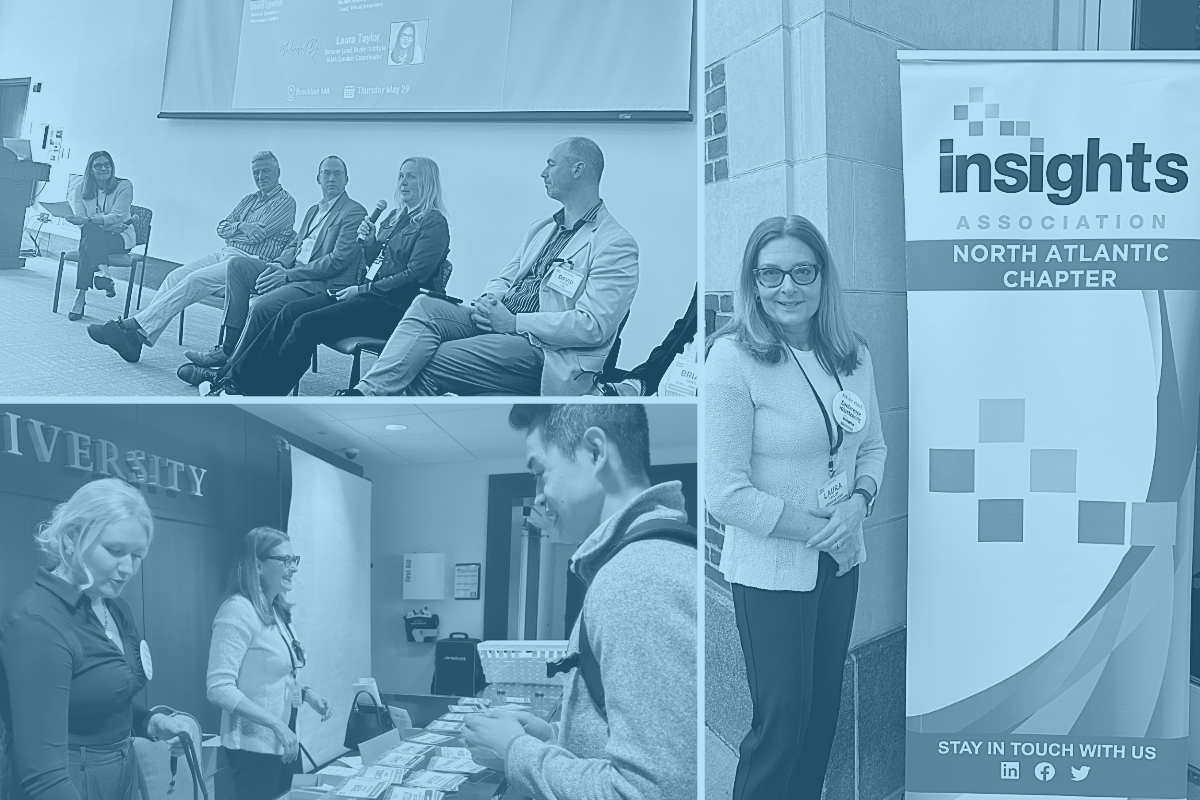
Four Qualitative Research Methods to Unlock Deeper Insight
by Danny Cox
Last year, the world underwent a significant change with the launch of generative AI tools like ChatGPT, Microsoft Copilot and Google Gemini. Across industries, companies worldwide are now analyzing, creating, and vetting AI tools, and marketing research is no exception. Despite the growing number of potential applications within both quantitative and qualitative methods, AI is not yet a one-for-one replacement for human interaction.
While AI can be a rich source of aggregating, synthesizing, and summarizing data, it lacks a key element of comprehensive understanding: human nuance. In this new age of generative AI, the source of data – and the context surrounding that data – is now more important than ever.
Enter qualitative research. Leveraging qualitative methods illuminates the context of the human experience. By engaging directly with individuals, we can deepen our understanding of the meanings behind consumer attitudes, behaviors, and experiences. It is a powerful tool for understanding the complexity and richness of what makes humans, well, human. By prioritizing the individual over the aggregate, qualitative research can uncover hidden patterns and themes, giving voice to those who may have been unheard before.
To successfully delve into the rich, intricate nuances of human behavior — a realm where AI still falls short — consider incorporating one of these four qualitative methods into your next research project:
Qualitative Method #1
Pre-Tests
A pre-test is an essential step in ensuring the accuracy and effectiveness of a larger, quantitative survey prior to its launch. While a client may be seeking the validity that only quant can bring, a qualitative method pre-test ensures that all respondents are “on the same page” and the questioning, attributes, and measurement device are easily understood and as accurate as can be. From a tactical perspective, this often involves conducting one-on-one conversations, where moderator and respondent examine and discuss each question and answer, aiming to identify any potential issues with the survey design and logic, such as unclear wording or confusing questions.
Ultimately, pre-tests help bridge the gap between quantitative and qualitative data, and in some cases, can help clients gain a deeper understanding of their target audience and make better-informed decisions during survey development. At the end of the day, pre-tests play a crucial role in ensuring the long-term success of a survey and can save time, money, and resources in the long run.
Qualitative Method #2:
Side-by-Sides/Co-Creation
Burke Side-by-Sides, or co-creations, are collaborative insight discovery workshops where client teams work directly with a large number of respondents (together in the room!) to gain a deeper understanding of their needs, wants, and preferences. These sessions are designed to provide qualitative method insights that are rich and engaging for client and respondent.
During these sessions, facilitators work closely with clients and stakeholders to guide these large consumer groups through a variety of creative and objective-focused activities. These exercises are designed to elicit honest and thoughtful feedback from respondents, and can include anything from brainstorming sessions to role-playing exercises, as they are tailored to your specific needs.
The insights gained from these sessions are immediate and actionable. Clients leave with an intimate, firsthand understanding of their target audience and a clearer idea of how to improve products or services to better meet their needs.
Qualitative Method #3
Video Open-Ends/Follow-Ups
Video open-ends are a simple, but incredibly powerful tool that can add a whole new layer of depth to quantitative surveys. By allowing respondents to submit video responses instead of just written answers, researchers can capture a wealth of qualitative method data that might otherwise be missed. These videos offer a unique, more nuanced perspective than just written responses and weave in a human element to the data. Overall, video open-ends can be a valuable addition to any survey for those looking to gain deeper and more meaningful insights from their data, without adding on an additional qualitative phase of research.
Qualitative Method #4
Focus Groups
Finally, the tried-and-true focus groups remain a fantastic option for bringing qualitative method data to life. Through diverse opinions, perspectives, and a group dynamic, clients can bear witness to deeper understanding via the audience’s collective knowledge and experiences to gain valuable insights that may be missed in individual interviews or surveys. Focus groups can dive deep on the emotions, motivations, and behaviors that may not always present themselves as richly in a quant survey — providing clients with a wealth of qualitative data that can further contribute to a holistically-informed decisions. Focus groups remain a valuable tool for gathering in-depth insights and feedback that can help you bring your data – and consumer base – to life.
In summary, humans are complex, multi-layered, and often not fully represented by numbers, big data, and AI probability models. Exploring the deeper motivations of human behavior is truly a journey with no end – but, a qualitative methods can be the missing key to fully unlock the ‘full story’ of consumers, setting your research on the right path towards deeper, more meaningful insights.
Interested in what the future of AI could look like within the field of qualitative research? Listen to what our experts think: The Promise of AI in Qualitative.

Danny is an Account Manager on Burke’s Qualitative Research team. An organized and adept multitasker, Danny blends his passion for qualitative research with background in quantitative-based project management to ensure the success of each project.
As always, you can follow Burke, Inc. on our LinkedIn, Facebook and Instagram pages.
Source: Feature Image – ©Jacob Lund – stock.adobe.com








